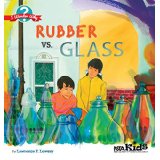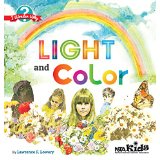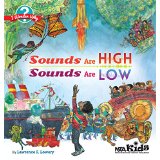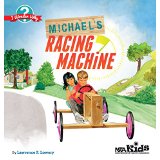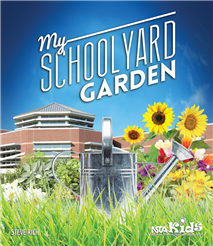 In part one of this series (Creating Children’s Science Books: A Lesson in Teamwork), I wrote about the ways photographer Ellen Harasimowicz and I have worked together to create our most recent books, Handle with Care and Beetle Busters, both of which were selected as Outstanding Science Trade Books for Students K-12 by the National Science Teachers Association (NSTA) and the Children’s Book Council. In this post, I’d like to share some insights into the ways other author-illustrator teams work together.
In part one of this series (Creating Children’s Science Books: A Lesson in Teamwork), I wrote about the ways photographer Ellen Harasimowicz and I have worked together to create our most recent books, Handle with Care and Beetle Busters, both of which were selected as Outstanding Science Trade Books for Students K-12 by the National Science Teachers Association (NSTA) and the Children’s Book Council. In this post, I’d like to share some insights into the ways other author-illustrator teams work together.
 I found some great inspiration at George Aranda’s Science Book a Day blog. He’s recently interviewed author Liz Rusch and photographer Tom Uhlman about their creative process for the book Eruption! Volcanoes and the Science of Saving Lives and also author Penny Chisholm and artist Molly Bang about their Buried Sunlight: How Fossil Fuels Have Changed the Earth. These interviews reiterate some of what I’ve already told you: creating quality science books for kids involves a lot of teamwork between authors and illustrators, whether those illustrators are artists or photographers. But something else stands out in these interviews, too: at the core of this teamwork, at least for books about the real world and how it works, is a focus on complete scientific accuracy.
I found some great inspiration at George Aranda’s Science Book a Day blog. He’s recently interviewed author Liz Rusch and photographer Tom Uhlman about their creative process for the book Eruption! Volcanoes and the Science of Saving Lives and also author Penny Chisholm and artist Molly Bang about their Buried Sunlight: How Fossil Fuels Have Changed the Earth. These interviews reiterate some of what I’ve already told you: creating quality science books for kids involves a lot of teamwork between authors and illustrators, whether those illustrators are artists or photographers. But something else stands out in these interviews, too: at the core of this teamwork, at least for books about the real world and how it works, is a focus on complete scientific accuracy.
For a little more insight into how teamwork and accuracy can guide the creation of a children’s science book, I spoke with author Kate Messner and illustrator Christopher Silas Neal, who collaborated on the 2012 OSTB title Over and Under the Snow. Their picture book, narrated by a fictional child cross-country skiing through the woods with her father, is not a work of nonfiction. Even still, says Kate, “We wanted to make sure the information young readers took from the story was accurate and true to the nature they might see in the woods.”
 Here’s an example of just how difficult that can be in a book created by two artists.
Here’s an example of just how difficult that can be in a book created by two artists.
“When I wrote the text,” says Kate, “I included detailed back matter with a short informational piece about each of the animals that appears in the story. I also created additional resources for my editor to share with Christopher—a list of the animals, along with their scientific names and notes about specific habits and winter behavior patterns. On the page about frogs, for example, the story text says only, ‘Under the snow, fat bullfrogs snooze. They dream of sun-warmed days, back when they had tails.’ The author’s note at the end of the book describes amphibian hibernation as well as the metamorphosis alluded to in the bullfrogs’ ‘tail days,’ while the notes I took just for Chris include the line, ‘Can hibernate by finding cracks in logs or rocky areas, and some also hibernate in holes they dig in the mud underwater (under the ice).’ This note is factual, rather than prescriptive, so it allows him the freedom to create the illustration in a way that’s artistically beautiful but also true to science.”
 And artist Christopher Silas Neal appreciates this freedom to hold up his end of the book, “Young readers must first relate to the story in order for scientific information to have any true value. When creating the art for our book, I began the same way I do all of my pictures, by manipulating shapes, carving out visual space, building memorable characters, and harmonizing colors in a way that hopefully provokes an emotional response. Approaching a manuscript as an artist first helps maintain a sense of magic, wonder, and humanity.”
And artist Christopher Silas Neal appreciates this freedom to hold up his end of the book, “Young readers must first relate to the story in order for scientific information to have any true value. When creating the art for our book, I began the same way I do all of my pictures, by manipulating shapes, carving out visual space, building memorable characters, and harmonizing colors in a way that hopefully provokes an emotional response. Approaching a manuscript as an artist first helps maintain a sense of magic, wonder, and humanity.”
 Once they’d arrived at a basic outline for the pictures to go along with the text, Christopher says he and Kate worked with their editor and a fact checker to find inconsistencies. “Even though my drawing style is far from realistic, we kept an eye on fine details such as relative animal size and body language to make sure the book was as informative as it is delightful. One of my favorite spreads from the book features a fox pouncing on a mouse hidden under the snow. My initial drawing had the body position all wrong. The editor made a note, and with some internet research, I was able to find dozens of pictures and videos, and changed the drawing to match the true behavior of a fox.”*
Once they’d arrived at a basic outline for the pictures to go along with the text, Christopher says he and Kate worked with their editor and a fact checker to find inconsistencies. “Even though my drawing style is far from realistic, we kept an eye on fine details such as relative animal size and body language to make sure the book was as informative as it is delightful. One of my favorite spreads from the book features a fox pouncing on a mouse hidden under the snow. My initial drawing had the body position all wrong. The editor made a note, and with some internet research, I was able to find dozens of pictures and videos, and changed the drawing to match the true behavior of a fox.”*
Eventually, this dynamic duo (their sequel, Up in the Garden and Down in the Dirt is due out this spring) found a place where the art and the words were both lovely and completely accurate. “It’s a dance,” says Kate, “one that sometimes goes around many times before we hit that perfect balance.”
Those of us who write and illustrate books about science and nature for children practice this dance on a daily basis. Our collaborations involve a lot of technical back-and-forth and creative give-and-take, and when all goes well, the result is an exceptional book that organizations like NSTA and the Children’s Book Council (CBC) can recommend to child readers, their families, and their teachers. Now that you’ve had a tiny peek inside the process, I hope that when you recommend these books to others—through your website or blog, print review or classroom bulletin board—you’ll remember to spotlight both partners, the author AND the illustrator.
Happy Reading!
* I don’t know if this is one of the videos Christopher used, but it is amazing and I cannot help sharing it with you. Check out this fox hunting in the snow!
 Loree Griffin Burns is an award-winning writer whose books for young people have won many accolades, including the NSTA/CBC Outstanding Science Trade Book Award for Students K-12, ALA Notable designations, a Boston Globe-Horn Book Honor Book Award, an IRA Children’s Book Award, a Green Earth Book Award, and two Science Books and Films (SB&F) Prizes. She holds a PhD in biochemistry and her books draw heavily on both her passion for science and nature and her experiences as a working scientist. Browse Loree’s website, find her on Facebook, or follow her on Twitter.
Loree Griffin Burns is an award-winning writer whose books for young people have won many accolades, including the NSTA/CBC Outstanding Science Trade Book Award for Students K-12, ALA Notable designations, a Boston Globe-Horn Book Honor Book Award, an IRA Children’s Book Award, a Green Earth Book Award, and two Science Books and Films (SB&F) Prizes. She holds a PhD in biochemistry and her books draw heavily on both her passion for science and nature and her experiences as a working scientist. Browse Loree’s website, find her on Facebook, or follow her on Twitter.
Follow NSTA










 Here’s a bit of the course description: “Working with learning scientists, we have identified a set of design principles and indicators of learning that can help you to integrate tinkering activities into your elementary and middle school science programs. This course will focus on key design elements of high quality science-rich tinkering activities, facilitation strategies, and environmental organization. Selected tinkering activities will be centered around circuits for this course. We will review the ways in which tinkering supports science learning through providing opportunities to deepen engagement, intentionality, innovation, collaboration, and understanding.”
Here’s a bit of the course description: “Working with learning scientists, we have identified a set of design principles and indicators of learning that can help you to integrate tinkering activities into your elementary and middle school science programs. This course will focus on key design elements of high quality science-rich tinkering activities, facilitation strategies, and environmental organization. Selected tinkering activities will be centered around circuits for this course. We will review the ways in which tinkering supports science learning through providing opportunities to deepen engagement, intentionality, innovation, collaboration, and understanding.”

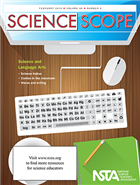 Science Scope:
Science Scope: 
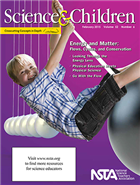
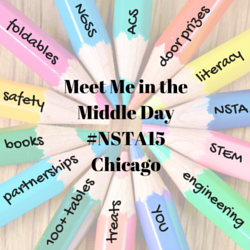
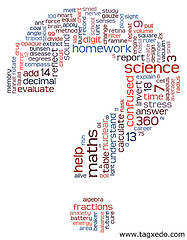






 Share your experiences with your students. Use some of the promotional items you collected as prizes or gifts.
Share your experiences with your students. Use some of the promotional items you collected as prizes or gifts.

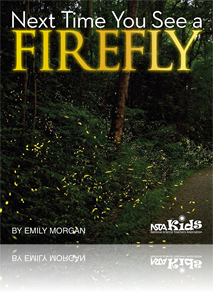
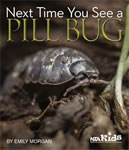











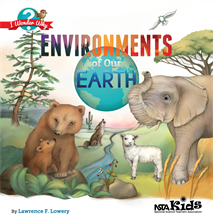 Environments of Our Earth
Environments of Our Earth